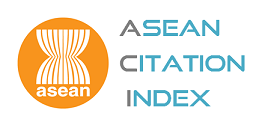Guidelines for Management of Blue Swimming Crab Resources by Small Fishing-Boat Fishery Communities Based on Local Wisdom: Case Study of Phe Bay of Rayong Province
Keywords:
Management of blue swimming crab, Small fishing-boat fishery communities, Local wisdomAbstract
This study was the qualitative research based on the participatory action research (PAR), which has been conducted by cooperation of small fishing-boat fishery communities earning for living by crab gill net fishery at the Phe Bay of Rayong Province, and other officials and technical specialists from related agencies in the area. The result showed some local fishery wisdom such as observation of Blue Swimming Crab habitat, tideway, wind, fishing operation, removal of crabs from crab gill net, crab catch seasons, season and environmental changes, etc. It was found that there have been some changes in Blue Swimming Crabs regarding the reduction of crab amount and size. Causes of changes in Blue Swimming Crabs at the Phe Bay included: 1) changing natural environment, e.g. delayed monsoon season; 2) impact resulted by leak of crude oil at Phrao Bay, Samed Island of Rayong at the end of July 2003; 3) use of smaller mesh-size net, catch of small-sized crabs, and selling of berried females; 4) destruction of marine and coastal resources resulted by the government policy in the coastal area development at Rayong; and 5) commercial fishing vessel operators’ employment of alien labors and use of high-tech tools to catch Blue Swimming Crabs regardless of crab types and sizes. The guidelines for management of Blue Swimming Crabs at the Phe Bay of Rayong Province to be implemented includes setting of core area as the fishery free zone, and establishment of Blue Swimming Crab bank to feed berried females.
Downloads
Published
How to Cite
Issue
Section
License
The opinions and ideas expressed in all submissions published in Thammasat Review are solely that of the author(s) and do not necessarily reflect that of the editors or the editorial board.
The copyright of all articles including all written content and illustrations belong to Thammasat Review. Any individuals or organisation wishing to publish, reproduce and distribute a particular manuscript must seek permission from the journal first.








